As You Exit the East Gate of Imamiya Shrine in Rakuhoku, Kyoto, the Aroma of Roasted Mochi Wafts Through the Air.
Since ancient times, the teahouses near the gates of shrines and temples have sold sweets to visiting pilgrims. These traditional sweets are made using methods that have been passed down unchanged for hundreds of years. This is a place where you can experience the timeless scenery of old Kyoto, a sight you won’t find anywhere else.
"Would you like some aburi mochi?"
If you are drawn to that familiar call, you will meet a view that has remained unchanged for generations. Two teahouses, Ichiwa and Kazariya, sit facing each other, and for generations, they have preserved the taste of Imamiya Shrine’s aburi mochi. Visitors have long enjoyed the taste and the blessings that are believed to come from eating aburi mochi, a treat that has been cherished by shrine-goers for centuries.
The Charm and History of Aburi Mochi on the Path to Imamiya Shrine
What is the story behind aburi mochi, a beloved sweet that has been cherished for generations as a gate-side treat of Imamiya Shrine? It carries with it the prayers and wishes of ancient people.

Imamiya Shrine was founded in the year 994 during the Heian period, when Kyoto was the capital. The origin of aburi mochi dates back to the year 999 when a Goryoe (a ritual to pray for health and ward off epidemics) was held at the shrine to pray for protection against an epidemic that was sweeping through the city. Goryoe is a ceremony performed to calm the spirits of those who have died unexpectedly and to prevent their wrath. White, round mochi, believed to house sacred spirits, was offered during the ceremony. After the offering, the mochi was grilled over charcoal and shared with the people, according to legend.
Because the epidemic subsided after the Goryoe, aburi mochi came to be considered a sacred food that could bring good fortune, and it has been passed down as a traditional gate-side treat ever since.
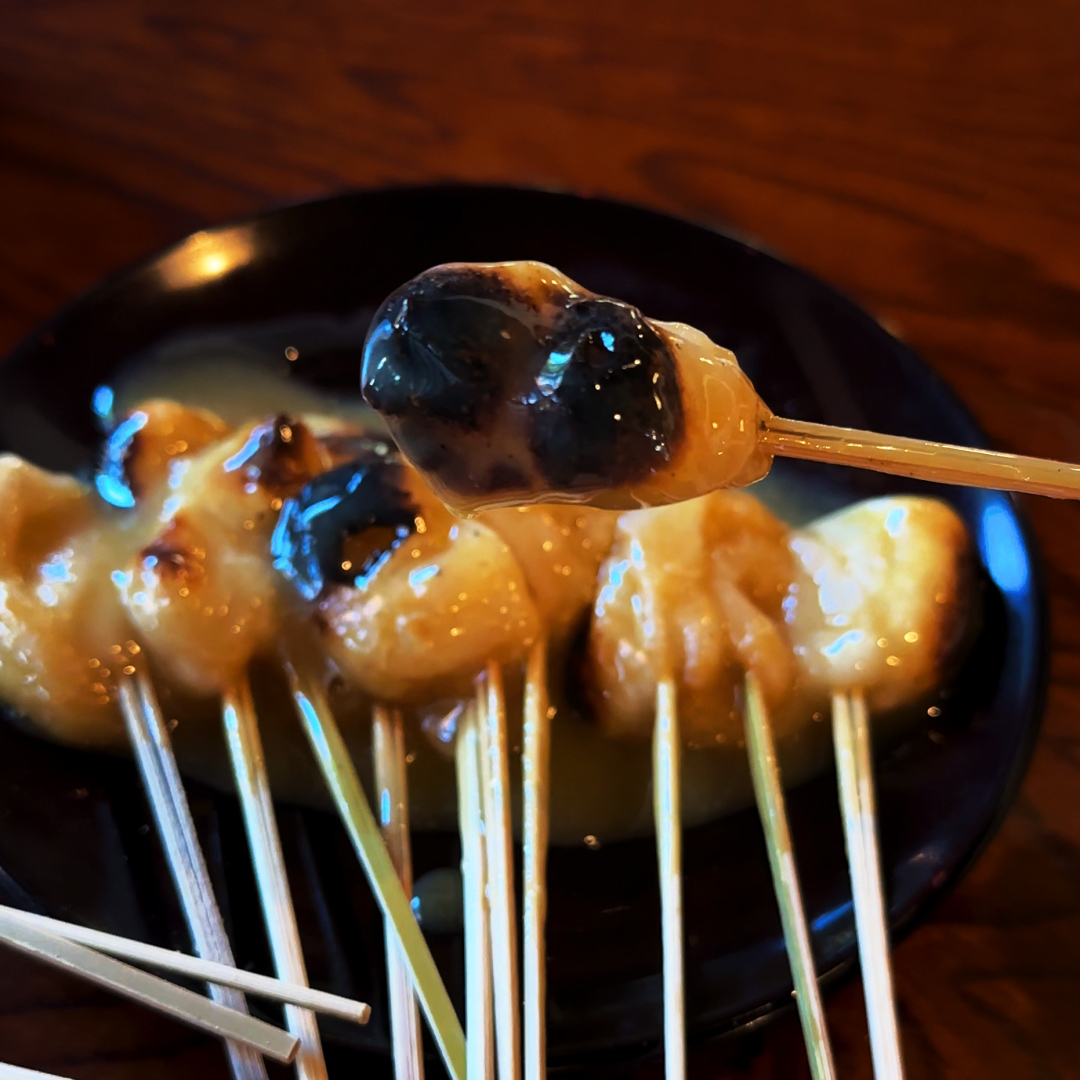
The Once Precious Aburi Mochi
In ancient Japan, round mochi was considered a sacred and valuable food. On special days, mochi was pounded, shaped into rounds, and offered to the gods. Afterward, it was divided and shared with visitors. Whether it was for offerings to the gods, for celebrations, for giving thanks, or for boosting one’s strength, mochi has long been a food that embodies the heart and spirit of the Japanese people. Even today, the culture of mochi remains deeply rooted in Japan.
For people of the ancient times, aburi mochi was a rare and valuable treat that could only be enjoyed a few times a year, imbued with blessings.
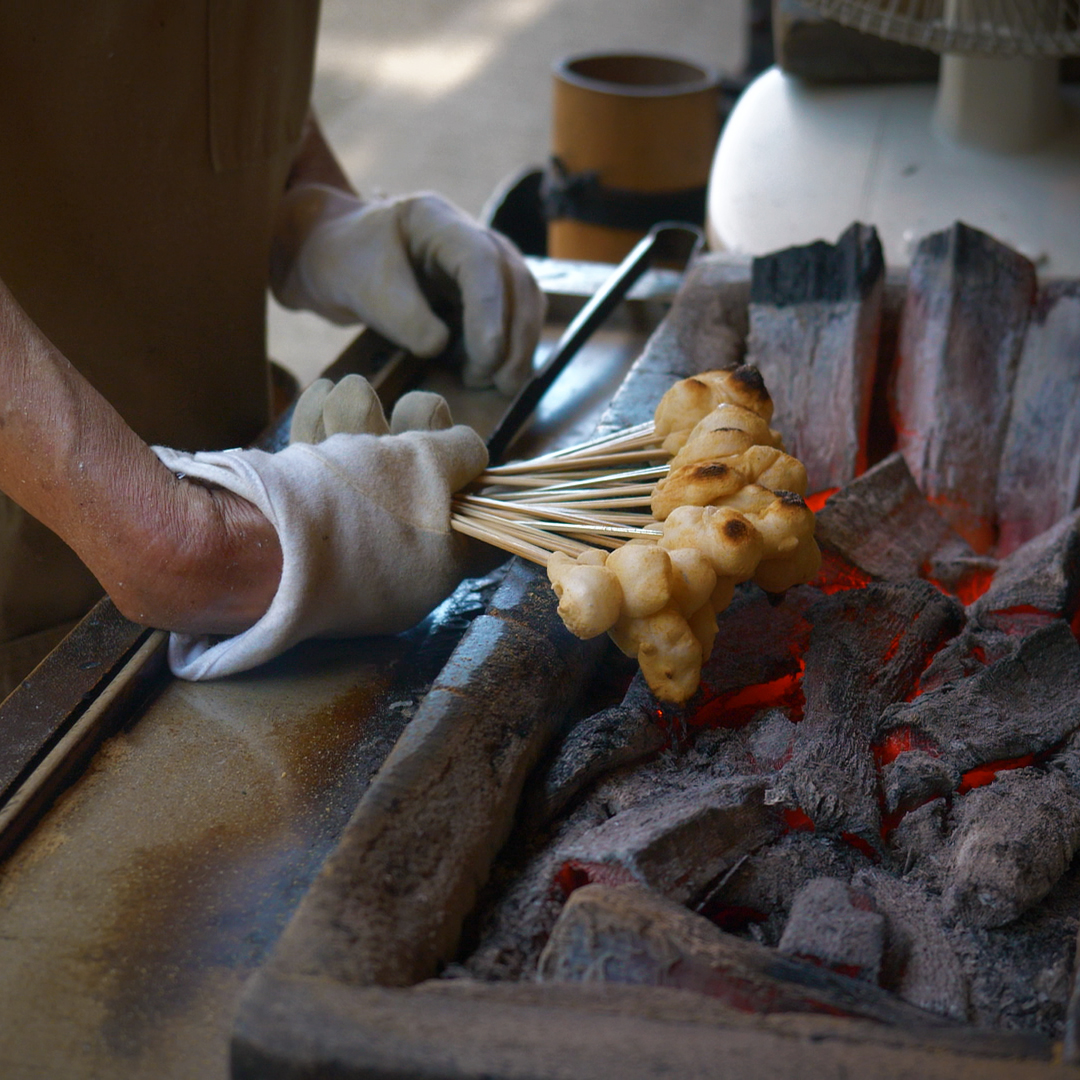
A Flavor Passed Down Through Generations
In the shop, small pieces of mochi are torn by hand, coated with roasted soybean flour, skewered, and carefully grilled over charcoal right in front of the customers. You can savor the freshly grilled mochi along with its delicious aroma. While waiting for the mochi to cook, you’ll be soothed by the crackling sound of the charcoal and surrounded by the scent of roasting mochi.
Kazariya, a shop that was founded during the Edo period, has passed down its signature taste through generations of women in the family. In old Japan, it was believed that women should guard the home while men earned a living outside. As the tea shops were considered an act of service rather than a business, the task of running them fell to the women who protected the home.
The mochi is grilled over charcoal and coated generously with a sweet white miso sauce to complete the fragrant aburi mochi. This method has not changed one bit since ancient times.
Japan has many types of miso, but Kyoto is known for its white miso culture, with many traditional sweets also using white miso. The perfect combination of the sweet miso sauce and the roasted mochi is so delicious, you’ll want to eat it again and again. After trying aburi mochi served with Japanese tea at the teahouse, you’ll surely want to visit again.
The bamboo skewers used for aburi mochi are the same ones used for offerings at Imamiya Shrine, and they carry a meaning of protection from evil.
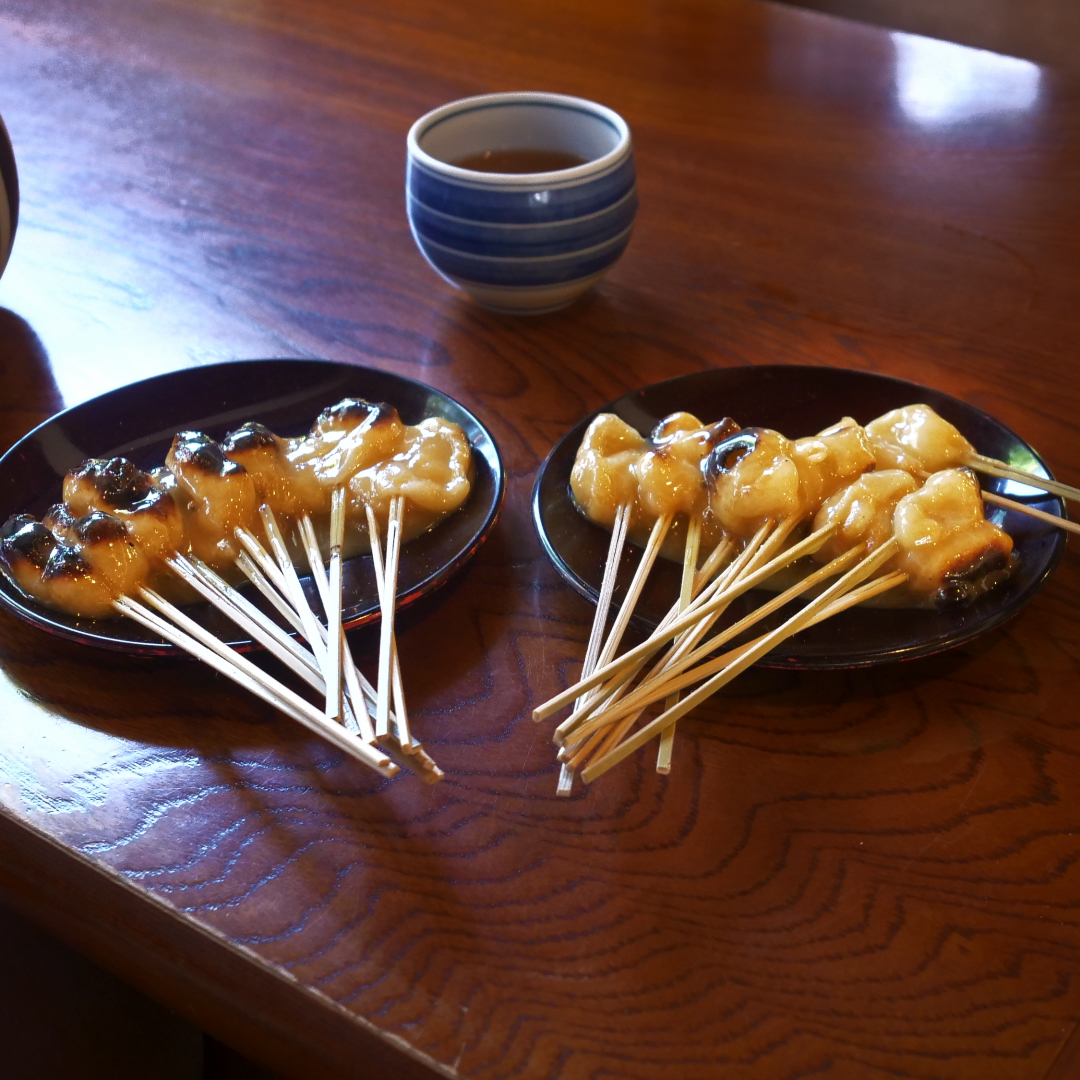
A Hidden Charm You Might Not Know
As you enjoy aburi mochi at Kazariya, take a moment to admire the beautiful interior. It offers a luxurious experience of Kyoto’s charm.

Kazariya is housed in a historic building that was constructed over 400 years ago. The men of the family worked outside as carpenters, shrine craftsmen, and mikoshi (portable shrine) decorators. The owner of Kazariya, who was also a craftsman, built the entire shop with his own hands. Even after all these years, the building retains its beautiful appearance, a testament to Japan’s incredible traditional craftsmanship.
As you explore the shop, you’ll find other pieces of history scattered throughout.

In front of the shop sits an old copper pot. During World War II, copper was confiscated from homes to make bullets for guns. However, Kazariya’s precious copper pot was hidden in an air raid shelter and protected at all costs. This pot carries the memories of the people who have passed down Kazariya through the generations.
In the back of the shop, you’ll find a collection of "Maneki Neko" (lucky cat figurines) that were gathered by the previous owner.
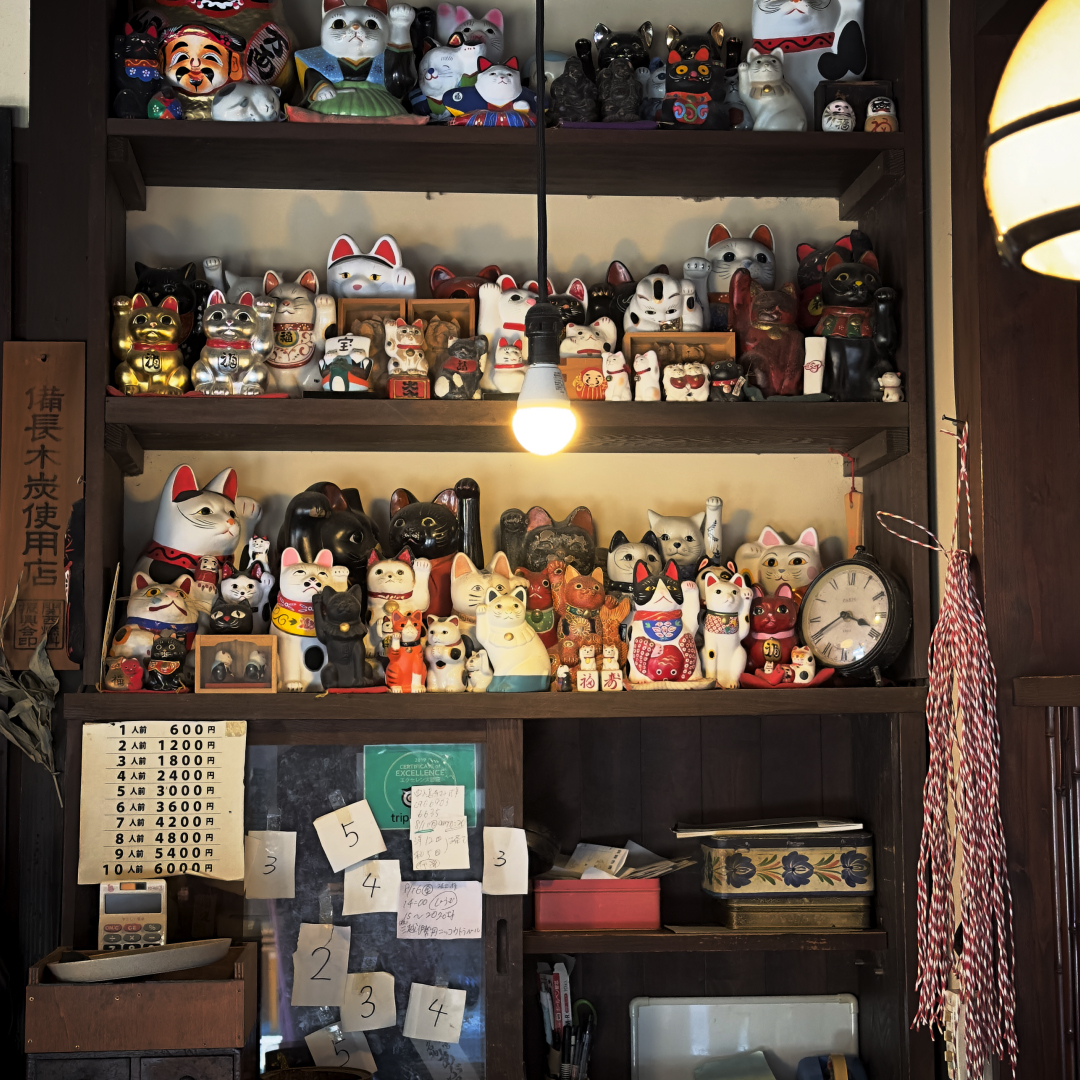
The black manekineko in the center is the oldest in the collection. In Japan, black cats are also considered to bring good luck. Be sure to look for it when you visit.
In the garden, there is a small shrine dedicated to a white snake called "Shirohebi-zuka." In Japan, white snakes are considered lucky omens. A white snake once appeared here, and in gratitude, it was enshrined. Take your time and enjoy the taste that have been passed down through the centuries.
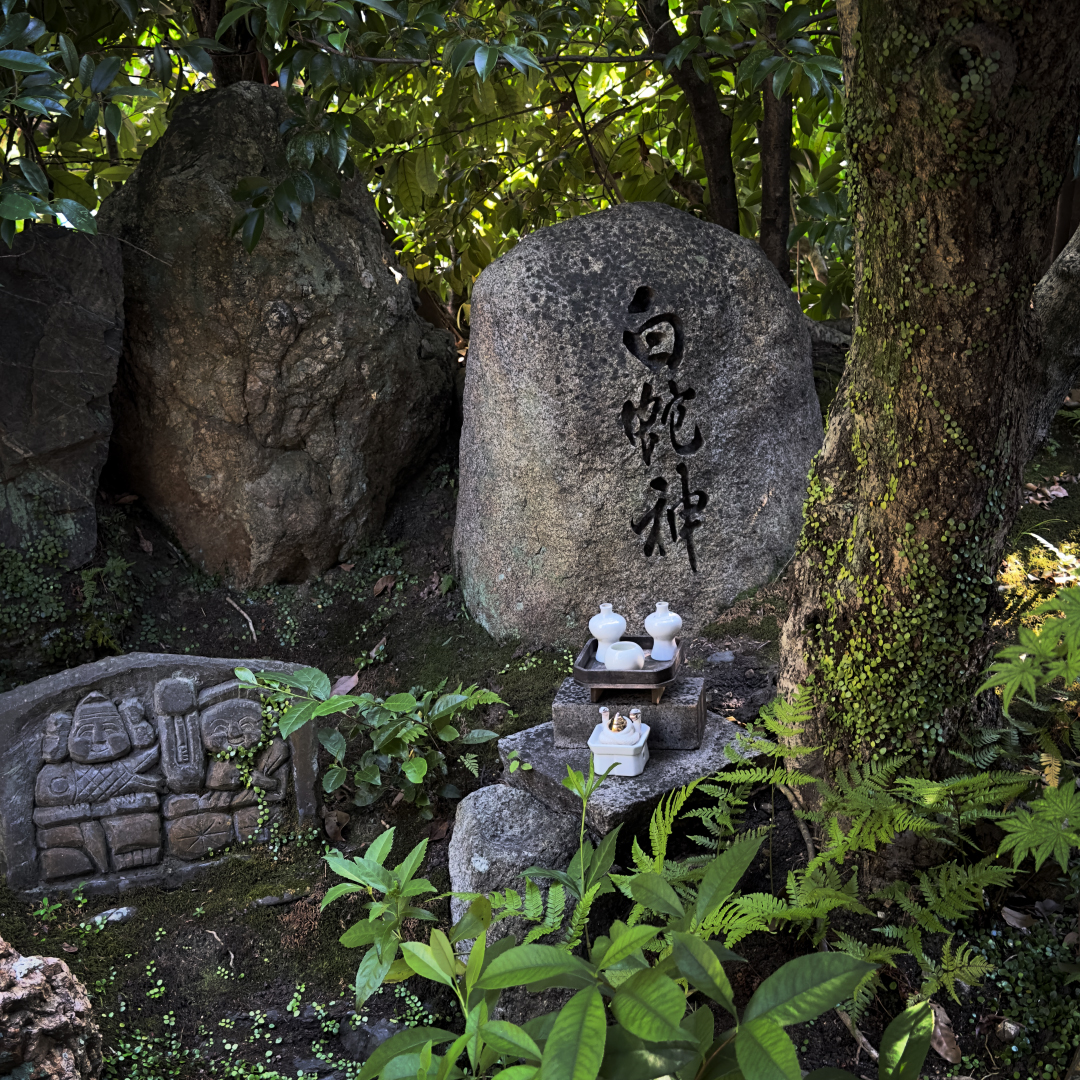
<Shop Information>
KAZARIYA
96 Murasakino Imamiya-cho, Kita-ku, Kyoto-shi, Kyoto 603-8243, Japan
Opening Hours: 10:00 AM – 5:00 PM
Closed: Wednesdays
TEL: +81-75-491-9402


